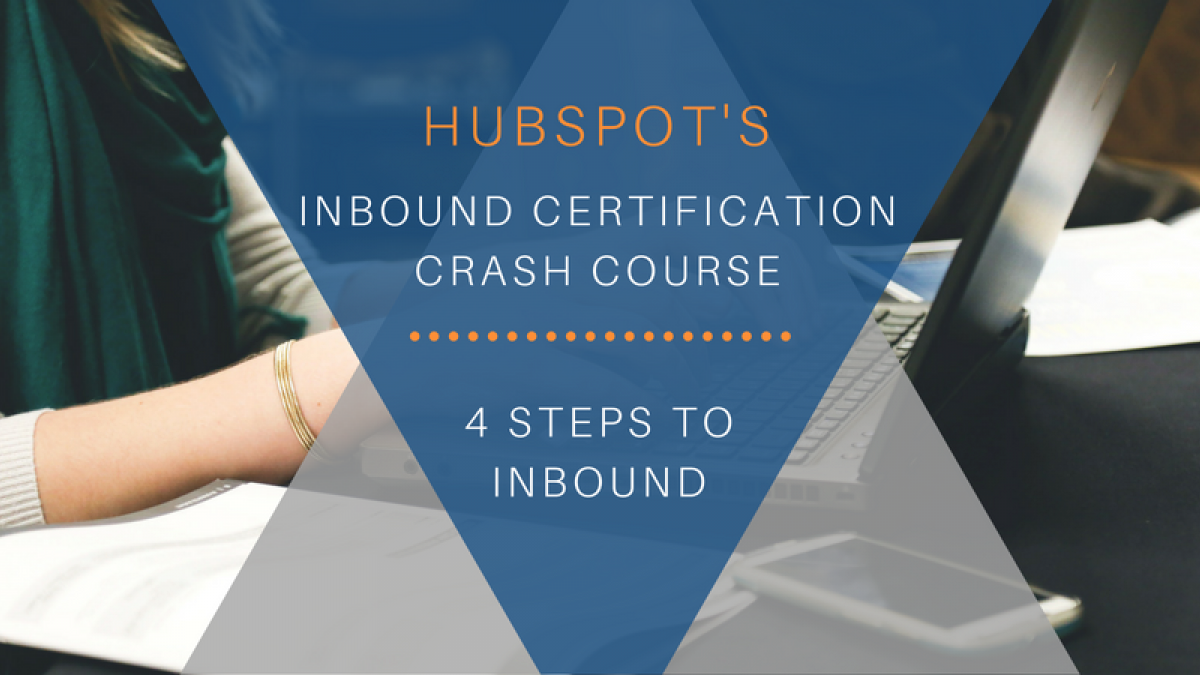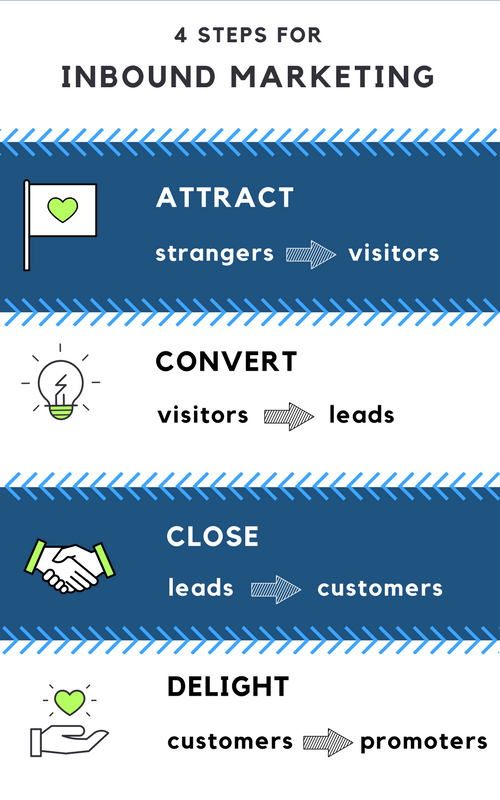
HubSpot's Inbound Certification Crash Course
Inbound marketing recognizes that times have changed. The power has shifted from business to consumer. In response, inbound marketing focuses on the customer by attracting—rather than distracting—people with the right content at the right time.
One of the best inbound marketing resources out there is HubSpot's Free Inbound Marketing Certification Course. Don’t have time to take the course yourself? No worries, today, I’m going to brush over some of the most applicable highlights from this course by breaking down the buyer’s journey and how you can apply inbound methodology at each stage of it.
The Buyer’s Journey
The buyer’s journey is a three-step process that people go through before making a purchase.
- Awareness Stage: The buyer recognizes that they have a problem. i.e., Why isn't my website generating any traffic?
- Consideration Stage: The buyer searches for a solution to their problem. i.e., It looks like my company has low visibility to search engines. What are my options for getting my site to rank in the search results?
- Decision Stage: The buyer selects a solution for their problem. i.e., Which marketing agency have the best credentials to conduct SEO for a website in my industry?
Obviously, every business wants to get consumers to choose them in the decision stage. This is becoming a particularly difficult feat for businesses with an ever-increasing amount of competition and substitutes available at consumers’ fingertips. The good news is inbound methodology is designed specifically to lead consumers through each of these stages.
Inbound Methodology
Before you begin inbound marketing, you want to create buyer personas to represent your ideal customer.You can utilize your buyer personas to create relevant content that will educate consumers on their problems and solutions to their problems. Next, leverage your content by choosing the right distribution technique such as landing pages, social media networks, or blogs to lead your customers through the buyer's journey by giving them the right content at the right time.
There are four inbound steps that companies can use to encourage customers to reach the end of their buyer's journey:

Attract
We're looking to target the right people (a.k.a. your buyer personas) who will eventually become satisfied customers, eager to tell others about how awesome your company's offerings are.
You can leverage these powerful content tools to turn strangers into visitors:
- SEO: Optimize your website to promote site visibility and give your visitors a positive user experience. You can do this by utilizing relevant keywords to get your users from the search results page to the web page with the most relevant and useful content.
- Blogs: These help you stand out as an expert on the issue at hand and enables you to promote offers by providing consumers with the next steps to give your customers the solutions they are looking for.
- Social Media: With over 2 billion people actively using social media, you don't want to miss out on a slice of this pie. It also provides an easy way for consumers to promote your company's offerings.
Convert
Once you've attracted your visitors to your site, you want to turn them into leads by taking them through the conversion process:
- Call-to-action (CTA): Make sure these are action-oriented, include keywords that are consistent with the offer and landing page, and stand out with contrasting colors so users will know that they should click on it.
- Landing Page: HubSpot refers to landing pages as your "digital sales reps" which gather potential leads information by providing forms. Check out these helpful tips on how to create a successful landing page.
- Thank you page: Take your visitor to a thank you page so that you can show them additional offers and thank them at the same time.
Close
Now that you've attracted the right visitors and converted them into leads, you'll need to use the proper inbound marketing tools to turn your leads into customers.
- CRM: This offers an efficient way to keep track of all of the leads you've generated.
- Email Marketing: Segment by your buyer personas and personalize your emails' content by accounting for where they are in the buyers' journey.
- "Smarketing" (Sales + Marketing): In this day and age, marketing and sales go hand-in-hand. Be sure your marketing and sales goals align with each other and that the teams maintain open communication on the status of your companies' campaigns and products.
Delight
Never underestimate the power of following up with post-sale activity, whether you're educating your costumers on how to better use your offerings or utilizing surveys to see how you can enhance their experience. Happy customers are more likely to spread a positive word-of-mouth, turning your average customers into promoters.
As consumers continue to crave genuine solutions and relationships from companies, inbound marketing will continue to pave the way to success. Let us know what inbound marketing techniques are working for you in the comments below.
If you still need help transforming your website into an inbound marketing machine, contact us today. We'd love to help you turn potential customers into happy promoters.

